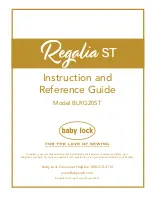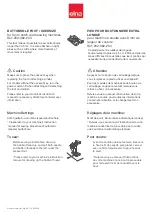
69
Buttonholes, 4-step
On-screen manual – see stitches 1/47, 1/48
The 4-step buttonhole is especially suited for corded
buttonholes, oversized novelty buttons or larger
decorative openings for weaving curtain rods and
scarves, for example. All buttonholes should use
interfacing suitable for the fabric weight.
Test sew the buttonhole on a sample swatch of the
same fabric A. Include the interfacing B and any
seam allowances that will be in the actual garment.
Classic – 1/47
The most common buttonhole, found on blouses,
shirts, pants, etc. It consists of a bartack at each end
and a compact zigzag stitch along each side. Set the
stitch width to narrow for lightweight fabrics and
wide for heavyweight.
Bound – 1/48
Made through the garment and interfacing before
the facing is applied, resulting in finished fabric
edges, a couture touch. Often found on garments
made from natural fibers. See page 71.
1.
Mark buttonhole positions. To determine the
buttonhole length, add the diameter of the
button to the thickness of the button.
2.
Place both threads to left under foot.
3.
Place fabric under foot and lower foot so
buttonhole mark is positioned just inside start
point.
Summary of Contents for XQUISIT 2
Page 18: ...17...
Page 87: ...86 7 mm Script NOTE Use T foot 15 and 25 mm Script NOTE Use T foot Outline NOTE Use T foot...
Page 88: ...87 Utility U NOTE Use I foot Heirloom H NOTE Use I foot Quilt Q NOTE Use I foot...
Page 107: ...106 Century Bold Script Euro...
Page 108: ...107 Designs Continuous Hoop...
Page 163: ...162...
















































